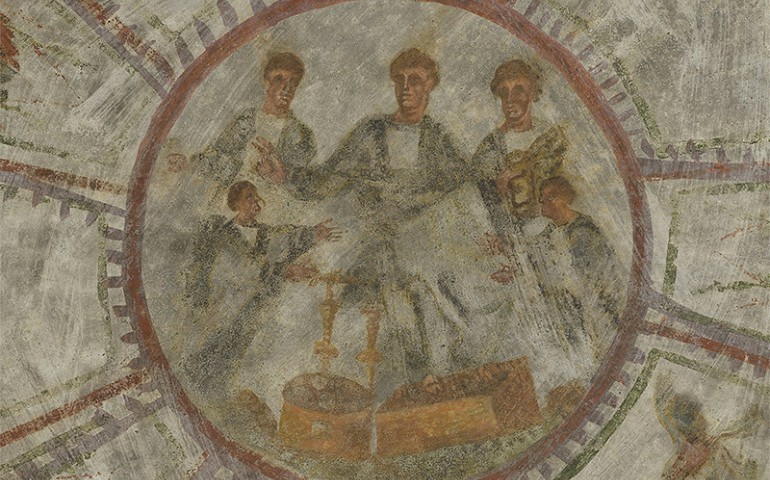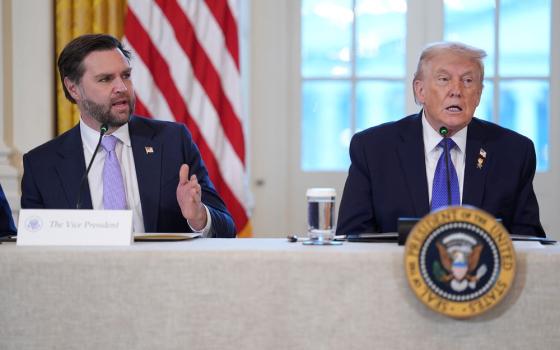
This fresco shows Christ flanked by two saints who were believed to be Christian martyrs. (Pontifical Commission for Sacred Archaeology)
Ancient frescoes have been rediscovered inside the 1,600-year-old Domitilla catacombs after Italian art experts used laser technology to remove centuries of grit and grime.
The catacombs, or underground cemeteries, are named after a Roman noble family and are considered the most extensive in the Italian capital, drawing thousands of tourists.
The painstaking seven-year restoration, backed by the Vatican, focused on two burial chambers commissioned by successful bakers working in ancient Rome in the fourth century.
The restoration revealed spectacular frescoes showing how wealthy Roman aristocrats abandoned their pagan mythology to embrace Christianity.
Archaeologist Fabrizio Bisconti, head of the Vatican body responsible for ancient archaeology, said many frescoes had been discovered in Rome's catacombs over the past 25 years.
But he said the latest revelation is significant, as the rooms had been completely covered in a black patina and graffiti.
"With the use of laser, the decorative work of the two chambers is shown in all its splendor, offering us a real discovery, even though the two chambers have been known about for many centuries," he said.
The Domitilla catacombs are close to the ancient Appian Way and contain an underground basilica and four levels of corridors, chambers and crypts where 150,000 Christians and martyrs were buried. They span more than 10 miles.
The frescoes that were brought to light had been hidden under layers of dirt, algae and smoke left behind by oil lamps.
Using lasers, restorers discovered frescoes of pagan figures as well as biblical figures such as Moses and Noah on the chambers' surface.
One ceiling fresco features an image of Jesus on a throne and two men, believed to be saints or Christian martyrs, seated beside him.
Cardinal Gianfranco Ravasi, who heads the Vatican's Pontifical Council for Culture, said the catacombs were a reminder of "the passage of conversion to the new faith" and the importance of Domitilla as a Christian burial site.
"Between the third and fourth centuries they welcomed both the common faithful and the martyrs," Ravasi said in a statement.
After the collapse of the Roman Empire, many of the catacombs were forgotten and later raided for their art treasures. They were rediscovered in the 16th century by Antonio Bosio, an archaeologist who loved to leave his name scribbled on the frescoes in charcoal.
A new museum featuring sarcophagi, busts and epitaphs is expected to open at the catacombs this month.


